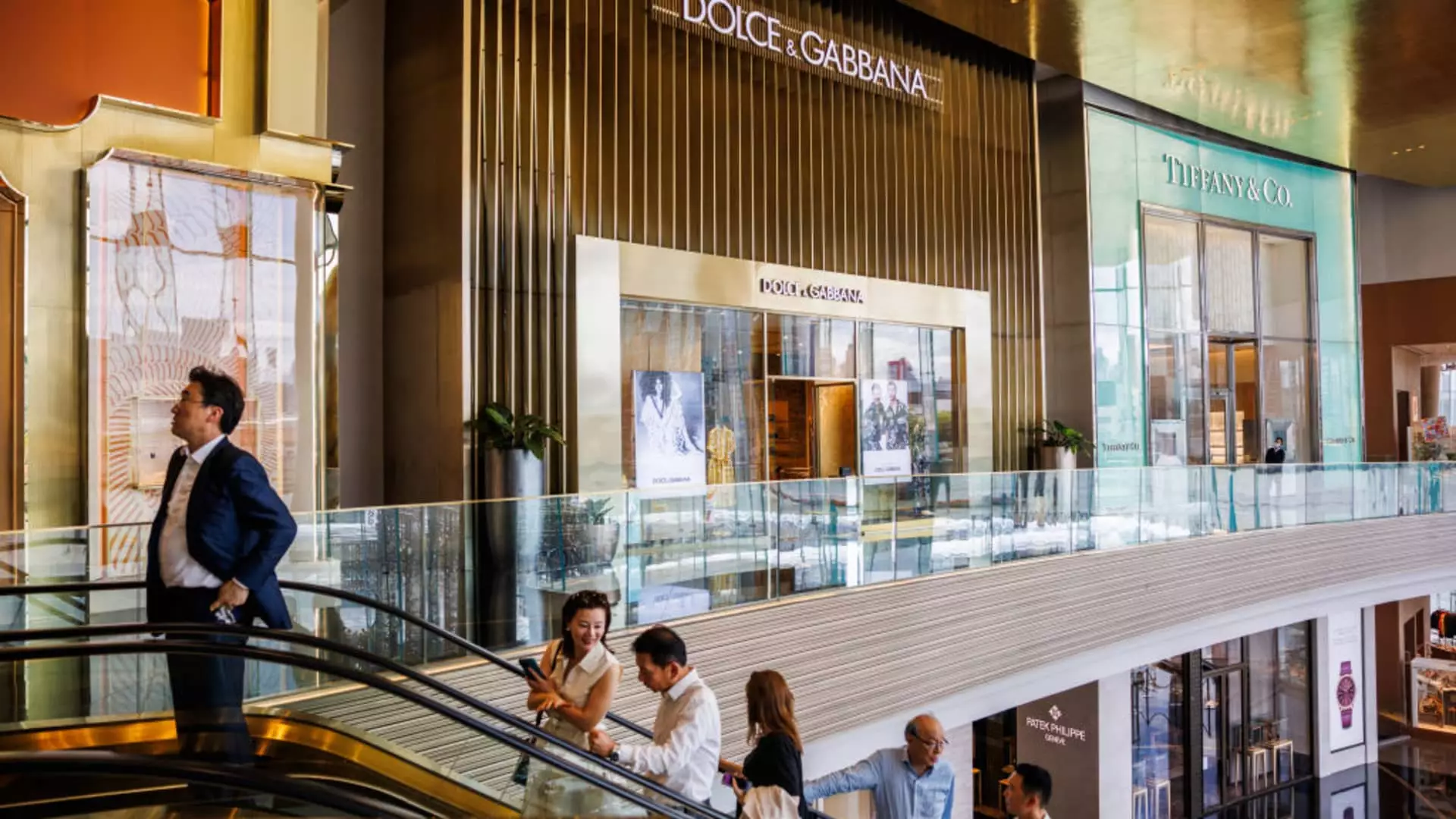In the ever-evolving landscape of consumer habits, the luxury goods market, known for its resilience, is currently facing unprecedented challenges. According to Bain & Company’s annual luxury report, 2024 marks the first significant decline in personal luxury goods demand since the Global Financial Crisis of 2008. This downturn can largely be attributed to macroeconomic instability, specifically a notable slowdown in China—the world’s largest luxury market—that is reshaping consumer behavior and impacting brands’ bottom lines.
The report indicates that categories such as clothing, bags, jewelry, and cosmetics are witnessing a decrease in consumer engagement, with projections showing a contraction of approximately 2% in the luxury market over the year. This decline disrupts a 15-year growth trajectory, interrupted only during the Covid-19 pandemic. The current scenario is troubling for luxury brands, which have enjoyed significant consumer loyalty and high spending levels from affluent buyers. Elevated costs, combined with diminishing customer loyalty, have driven many consumers to reconsider their purchases or eliminate high-end brands from their shopping lists altogether.
Moreover, the overall luxury goods spending is expected to remain stagnant at around €1.5 trillion ($1.59 billion) for the upcoming year. This stagnation highlights the discrepancies within various segments of the luxury category; while personal goods struggle, sectors like luxury travel, fine wines, and gourmet dining demonstrate resilience and modest growth, revealing a complex and multifaceted consumer landscape.
One of the major factors influencing this downturn is the pronounced slowdown in the Chinese market. Luxury brands relying heavily on Chinese consumers have particularly felt the impact, as domestic spending has significantly contracted due to muted consumer confidence. The report warns that sustained weak demand in China could pose continuous threats to the luxury sector as brands grapple with finding their footing.
Companies like Richemont, once considered immune to wider industry challenges, have also reported dwindling sales, emphasizing that the luxury sector’s dependency on China is both a blessing and a curse. Bain & Company’s analysis suggests that if China’s economic situation stabilizes in the latter half of 2025, it might pave the way for a nuanced recovery, yet brands must act strategically to respond to the evolving market dynamics.
Despite these challenges, there are positive indicators within the luxury sector. In regions such as Europe and the U.S., brands are beginning to see a revival, particularly in Japan, driven by favorable currency rates. Luxury brands are experiencing a shift in consumer spending patterns, with more consumers opting for experiences and small indulgences—like eyewear and beauty products—rather than high-ticket luxury items.
Luxury travel has emerged as a focal point of growth, as consumers prioritize unique experiences over material possessions. This trend towards experiential purchases suggests a shift in consumer mindset, one that luxury brands would be prudent to embrace in their marketing and product development strategies.
In light of these shifting preferences, luxury brands are compelled to reassess their value offerings. Claudia D’Arpizio from Bain & Company noted that roughly 50 million luxury consumers have either opted out of or been forced out of the market in the last two years. Addressing this gap requires brands to innovate continually and appeal to a younger demographic—particularly Gen-Z consumers, who demand authenticity and fresh engagement strategies.
To reconnect with customers, brands must leverage creativity in their messaging and focus on fostering genuine relationships. Personalized experiences and interactions will be vital, especially as these brands strive to combat consumer apathy.
As the luxury goods market navigates this challenging landscape, it stands at a crossroads that beckons a re-evaluation of strategies. The interrelation between macroeconomic conditions, consumer sentiment, and shifting purchasing behaviors will likely dictate the fortunes of luxury brands in the months and years ahead. Continuous innovation, authentic connections with customers, and an understanding of the evolving market landscape will be pivotal in determining the ultimate resilience and recovery of this iconic sector. Embracing change, while remaining true to core brand identities, could lead luxury brands to not just endure this slowdown but emerge transformed and rejuvenated.

